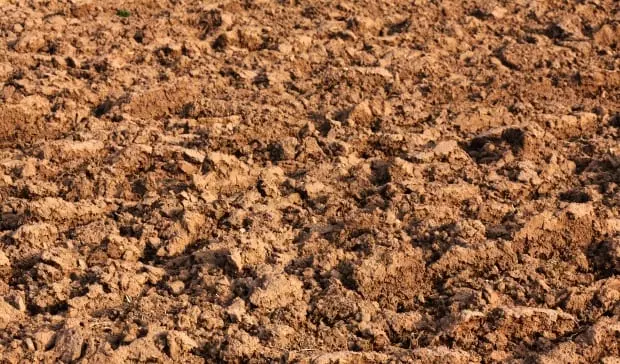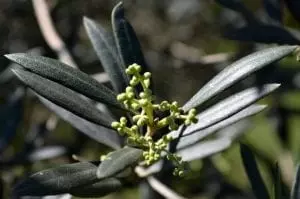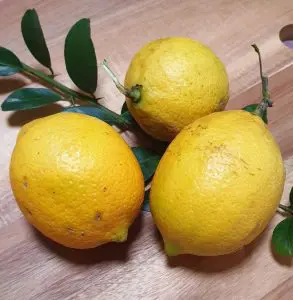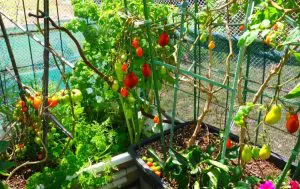The following article is a guest post by Ann Sanders founder of the Blog/Website A Green Hand based in the USA (more details/link to her Site at the end).
With the arrival of the spring season, many homeowners aspire to grow their own vegetables. However, it’s not as simple as sowing seeds in the soil and waiting for the right period to harvest the crops. Like with any other season, there are many factors that need to be considered during spring. Thus, we’re here to help you learn how to start a spring vegetable garden.
Cultivate and turn over the soil in March

Spring is the right time to build up your soil. In particular, breaking up clay soil around March is important. However, you need to know exactly when to turn it over. For one, you shouldn’t cultivate or dig the soil if you are already sowing vegetables. This needs to be conducted in preparation for planting your crops.
Through cultivation, weeds and debris are buried to stop them from hampering vegetable growth. Likewise, it prevents soil compaction to help the soil amendments work well. Before you turn over the soil, it should be adequately dry. First, check if your garden has standing water.
Another way to assess soil wetness is to create a ball of soil. It if’s dry enough, it should immediately crumble. At this point, you can till the soil and turn over any of the cover crops you planted in fall for green manure.
Likewise, March is when you should amend the soil for your vegetable beds. You can use organic substances such as shredded leaves, compost, and even animal manure as long as it is well-composted. The layers should be a couple of inches thick to ensure that your soil gets enough organic matter. Also, it is important to keep the soil amendments relatively dry and covered.
Get rid of weeds early in spring

March (in the USA) is when the temperature becomes warm enough for the pesky weeds to resume their active growth. At this point, the weeds are still small and can be quickly pulled up from the soil. Thankfully, their roots haven’t yet been established deep in the soil. Likewise, this removal process is eased due to the soil being moist.
Sow inside and outside your house

You have the option to sow vegetables indoors and outdoors. In March, you can grow various plants such as tomatoes, celery, lettuce, broccoli, tomatoes, eggplant, squash, cucumbers, and cabbages. Outside, vegetables such as radish, spinach, peas, potatoes, and beets can be grown. In addition, you may sow lettuce and salad greens this month if you have a cold frame installed in your vegetable garden.
Grow more plants and fertilize in April

After a month, the crops that were sown need adequate fertilizer. You can apply organic compost bought from your local garden supply store, or you can make your own using dried leaves, kitchen scraps, and newspaper sheets. Consequently, you can use well-composted manure to help lettuce and cabbage plants reach maturity faster than usual.
Moreover, you need to continue planting vegetables. April is an ideal month for sowing eggplants, squash, cucumbers, and peppers inside your home. Outside, you can sow beets, lettuce, and carrots. In fact, planting a second batch of spinach and radishes in April will ensure that you will have a bountiful harvest.
Irrigate, mulch, and practice pest control
Since you’ve begun growing vegetables in March and April, you need to prepare your irrigation system. Both seedlings and newly transplanted crops need frequent watering to help them thrive. Whether you will use a drip irrigation system, a sprinkler system, or a garden hose, you must check the irrigation tools are all working properly.
Apart from irrigation, your spring vegetable garden can receive more moisture through mulching. The garden beds can be covered with layers of mulch not only to help retain the moisture in the soil but also to keep the area relatively warm during cold nights.
Here's a video about mulching (below)
https://www.youtube.com/watch?v=GTjrgoUNNgE
Apart from giving moisture, your vegetable plants need protection from pests. If you reside in a region that’s experiencing frequent rainfall, you should watch out for slugs. These pests tend to move in the nighttime and consume the leaves of your vegetable crops. You can pull them away by hand or shake the leaves a bit to make the slugs fall. Afterward, place the slugs in a container with soap-filled water.
Transplant and grow outdoors in May
At this stage in spring, you no longer have to sow any plants indoors. However, you can sow a new batch of beets, carrots, and lettuce in your garden. This increases the likelihood of having crops to harvest once early summer arrives. Similarly, you can sow corn and bush beans once the soil starts to become warm.
During the latter half of May, you should transplant the vegetable plants you grew indoors. These include eggplants, tomatoes, peppers, and cucumbers. In addition, you must cover the young potato plants with soil. Use a hoe to do it efficiently. Doing so ensures that the potatoes won’t be exposed to direct sunlight, which can turn them green.
Once you’ve harvested your spring crops, don’t forget to fertilize your vegetable garden. This will ensure that you can gather more vegetables during summer and fall. Overall, growing your own vegetable garden in spring isn’t that difficult if you know how to prepare your garden. Similarly, it’s wise to know when and where to sow the seeds.
We hope that our guide helped you in establishing a vegetable garden at this time of the year. If you have any queries, feel free to send us a comment.
Editor: I hope you enjoyed this guest article written by Ann Sanders and I strongly encourage you to visit and follow her Website A Green Hand.













